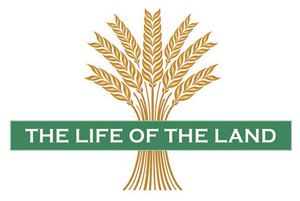News from the Noteworthy by Sustainable Otsego
Protecting Our County’s Vulnerable Open Places

For decades, until quite recently, dairy was the mainstay of the local economy, and a primary determinant of land use. With the contraction of dairy, our beloved landscape of pastures and hay fields interspersed with woods and wetlands is at risk. From an ecological or agricultural point of view, what is the best use for abandoned or neglected farmland? 1
For return on the dollar, and minimal labor requirement, planting corn is clearly the most popular choice, and many local farmers opt for a corn/soy rotation. In fact, of the remaining farmland in our area, the ratio of grass production to concentrates, such as corn, has reversed—previously 4:1, now 1:4.
Corn is notoriously hungry for nutrients and minerals. Annual application of manure, generated by dairy farms, previously allowed the necessary replenishment. The synthetic fertilizers now used cannot replace the missing organic material and teeming microbiome in manure. Corn can provide a satisfactory “leader” crop, allowing deep cultivation to break up the “weed cycle” caused by long dormant weed seeds. Rotation of corn with soy, small grains or vegetables could take advantage of corn’s “leader” status. However, the ubiquitous use of herbicides instead of cultivation negates this potential benefit. Nonetheless, rotation with other, less demanding crops, particularly those with complementary needs, goes a long way toward helping the soil heal itself from the losses incurred with corn.
How about the least costly approach: just let nature take over? Although this has appeal, it’s not a good choice if you desire to conserve farmland for future agricultural use. Invasive, non-native and difficult to eradicate species quickly take over. Our ash trees, formerly a rapidly growing “nurse tree” which shaded out invasives, are now decimated by ash blight. You might just end up with a forever field of a new invasive, such as Japanese knotweed.
A better option is to keep your field in perennial grass and herbaceous species, as hayfield or pasture. Grasses perform many ecological services, replenishing nutrients in their growth cycle. Their deep root systems prevent erosion and flooding. Grasses sequester as much carbon as trees, if compared on a vegetative volume basis. And they put the carbon underground, where it is not released into the atmosphere in case of fire. After years of corn, even in rotation with less demanding row crops, a few years in grass can be transformative for soil health.
Pasture, with rotational or mob grazing, is an excellent choice for building soil health, recycles local nutrients into food for us, and, if properly managed, should be carbon neutral. 2
Despite climate change, our area remains well suited to agriculture. Let’s keep it that way.
1 There are compelling arguments, which this column will not address, both for and against using our farmlands for large scale “renewable” utilities or for housing.
2 The July 2022 column of “Life of the Land” is devoted to the virtues of rotational grazing.
Authored by Sustainable Otsego. Since 2007, we have promoted ecologically sound practices – locally, regionally, and nationally. Our platform calls for sustainable living, economic independence, and home rule. Please visit us at sustainableotsego.net or facebook.com/SustainableOtsego.

